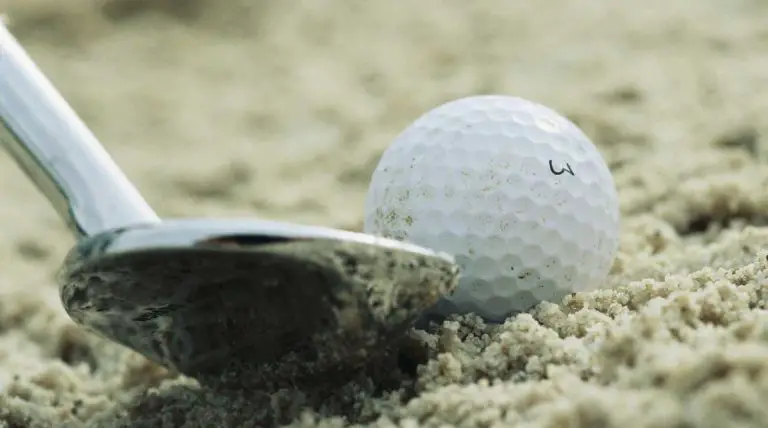Why Do Golfers Take A Divot

When you watch professional golfers or even amateur players on the course, you may notice something peculiar happening after they strike the ball: they take a divot. But why do golfers take a divot? Is it a necessary part of the game or simply a habit? In this article, we will explore the reasons behind this common practice and shed light on the importance of taking a divot in golf.
A divot is a small piece of turf or grass that is displaced when a golfer swings their club and strikes the ball. It may seem like an inconsequential detail, but divots play a significant role in a golfer’s game. They serve as a visual indicator of the quality of the shot and provide valuable feedback on the swing mechanics.
Taking a divot is not just a random occurrence; it serves a purpose. When a golfer strikes the ball with the correct technique, the clubhead should hit the ball first and then interact with the ground, resulting in the divot. This interaction between the clubhead and the turf helps produce optimal ball flight and shot quality.
The depth and shape of the divot can provide insights into the golfer’s swing mechanics. A shallow divot may indicate a steep angle of attack, while a deep divot may suggest a more shallow angle of attack. By analyzing the divot, golfers can gain valuable information about their swing and make necessary adjustments to improve their technique.
In addition to swing analysis, divots also affect the ball’s trajectory and spin. A properly executed divot can help create a desirable ball flight, providing the golfer with control and accuracy. It also allows the clubface to impart the desired spin on the ball, influencing its behavior upon landing.
Understanding why golfers take divots and how they impact the game is essential for every golfer looking to improve their skills. So, let’s dive deeper into the world of divots and uncover the secrets they hold, from swing mechanics to shot quality, and discover how this seemingly minor detail can make a major difference on the golf course.

What is a Divot in Golf?
Before understanding why golfers take divots, it’s important to grasp the concept of a divot itself. A divot is a small piece of turf or grass that is displaced when a golfer strikes the ball with their club. We will explore the physical characteristics of a divot and its role in the game of golf.
The Purpose of Taking a Divot
Taking a divot is not just a random occurrence; it serves a specific purpose in a golfer’s swing. We will uncover the reasons why golfers intentionally take divots and how it contributes to their overall performance. The benefits range from ball flight control to swing analysis and improvement.
Impact on Ball Flight and Shot Quality
The act of taking a divot has a direct impact on the flight of the golf ball and the quality of the shot. We will discuss how the angle of attack and the clubhead’s interaction with the turf influence factors such as trajectory, spin, and distance. Understanding this relationship will help golfers optimize their shots.
Divot Analysis: Reading Swing Mechanics
Divots can provide valuable insights into a golfer’s swing mechanics. By analyzing the depth, direction, and shape of a divot, one can gain a deeper understanding of their swing technique. We will explore how divots can reveal swing flaws, such as a steep or shallow angle of attack, and how they can be used to make necessary adjustments.
Club Interaction with the Turf
To understand divots, it’s crucial to examine how the clubhead interacts with the turf during the swing. We will delve into the dynamics of clubhead speed, angle of attack, and the type of turf, and how these factors influence the creation and depth of divots. This section will provide insights into the mechanics of divot-taking.
Divot Patterns and Interpretation
Not all divots are the same. They can vary in depth, width, and direction. We will discuss different divot patterns and what they signify in terms of swing characteristics. By recognizing patterns and interpreting them correctly, golfers can gain valuable feedback on their swing mechanics and make informed adjustments.
Divot Depth and Proper Divot Taking Technique
The depth of a divot is a crucial aspect of divot-taking. We will explore the ideal divot depth for different shots and clubs. Additionally, we will provide tips and techniques for executing a proper divot, including the importance of maintaining balance, posture, and follow-through.
Divot Taking in Different Playing Conditions
Divot-taking technique may vary depending on the playing conditions. We will discuss how golfers should adapt their divot-taking approach when playing on different types of turf, such as fairways, roughs, or sand. Additionally, we will address how weather conditions and course conditions can affect divot-taking strategy.
Divot Repair and Course Etiquette
Golfers have a responsibility to repair divots on the course to maintain its quality and playability for others. We will discuss proper divot repair techniques and emphasize the importance of course etiquette. By understanding the significance of divot repair, golfers can contribute to the overall enjoyment of the game for everyone.
Conclusion
In conclusion, taking a divot is an integral part of the golf swing, serving multiple purposes and providing valuable feedback to golfers. From ball flight control and swing analysis to course management and etiquette, the act of taking a divot plays a significant role in the game of golf. By understanding why golfers take divots and the impact it has on their shots, golfers can improve their technique, make necessary adjustments, and enhance their overall performance on the course.
Throughout this article, we have explored various aspects of divot-taking, starting with a clear definition of a divot and its physical characteristics. We then delved into the purpose of taking a divot, emphasizing the benefits it offers in terms of ball flight control, swing analysis, and improvement.
Understanding the impact of divots on ball flight and shot quality allowed us to uncover the direct relationship between divots and factors such as trajectory, spin, and distance. By analyzing divots, golfers can gain valuable insights into their swing mechanics and identify areas for improvement.
We also explored the interaction between the clubhead and the turf, discussing the dynamics of clubhead speed, angle of attack, and turf types. This knowledge helps golfers better understand how their club interacts with the ground and how it influences the creation and depth of divots.
Furthermore, we examined different divot patterns and their interpretation, providing golfers with the tools to analyze their swings more effectively. By recognizing patterns and making proper adjustments, golfers can refine their technique and achieve more consistent results.
We also discussed the ideal divot depth and proper divot-taking technique, highlighting the importance of balance, posture, and follow-through. Golfers who master these techniques can achieve optimal divot depth for different shots and clubs.
Additionally, we explored the importance of adapting divot-taking technique to different playing conditions, including various turf types and weather conditions. By adjusting their approach, golfers can optimize their divot-taking strategy and adapt to the course conditions for improved performance.
Finally, we emphasized the significance of divot repair and course etiquette. Repairing divots ensures the course remains in good condition for all golfers to enjoy. By following proper divot repair techniques and practicing course etiquette, golfers contribute to the overall sustainability and pleasant experience of the game.
In conclusion, the act of taking a divot goes beyond simply striking the ball. It serves as a valuable tool for golfers to analyze their swings, control their shots, and contribute to course maintenance. By understanding the reasons behind divot-taking and implementing proper techniques, golfers can enhance their game and elevate their golfing experience. So, next time you take a divot, remember the significance behind it and use it to your advantage on the course.







